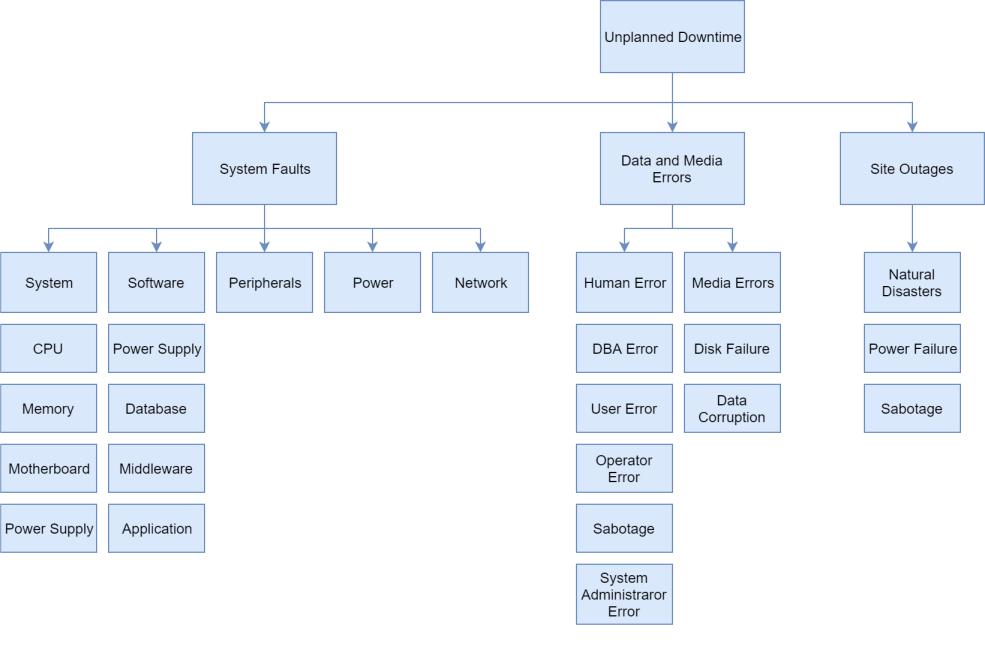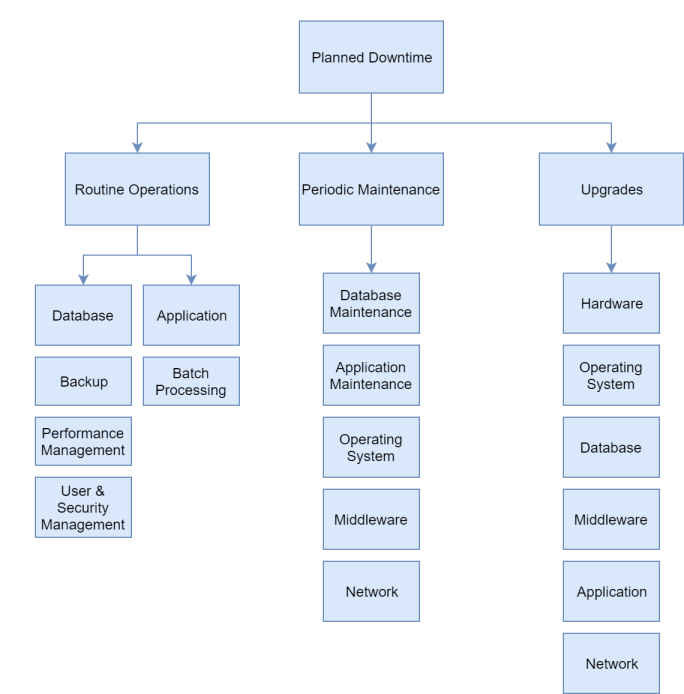It’s inevitable. Downtime happens. Providers and consumers must both understand the most common sources of downtime, for consumers rely on providers to provide a high percentage of uptime. While most people reasonably understand that systems can sometimes experience unexpected failures, most expect downtime to occur only during scheduled server maintenance. Therefore, it is of the greatest importance to differentiate the two different types of downtime: unplanned and planned.
Unplanned Downtime

Unplanned downtime describes situations including system faults, data and media errors, and site outages that cause the system to be unavailable to users. Systems faults can occur at multiple points in the server hardware/software architecture. Older servers tend to have parts that either fails as load increases or near-obsolete architecture that can’t handle the newest software platforms. Site outages are not only inherently uncontrollable but also forgivable, as they generally come from factors outside the control of the provider. (An exception is a sabotage due to a provider’s poor system security or firewall settings.)
Planned Downtime

There are three main sources of user-friendly planned downtime. First, routine operations provide user backups of server data or upgrades to performance and data-management capabilities. Next, periodic maintenance ensures a more seamless runtime by keeping necessary functions within the architecture both running and up-to-date. Finally, upgrades benefit both the provider and end-user by keeping the hardware and software at their maximum performance levels, so that they can handle third-party improvements. Upgrading to newer hardware also ensures a better uptime performance for the provider as newer, quality components are less likely to fail.
In order to keep systems working and to avoid service unavailability, High-Availability system architecture should be implemented. Redundancy in the server adds buffers for both end-users and providers, maximizing traffic to user sites and increasing business for the providers.
- Schemas source: https://docs.oracle.com/cd/A91202_01/901_doc/rac.901/a89867/pshavdtl.htm
- Photo by Kai Pilger on Unsplash
